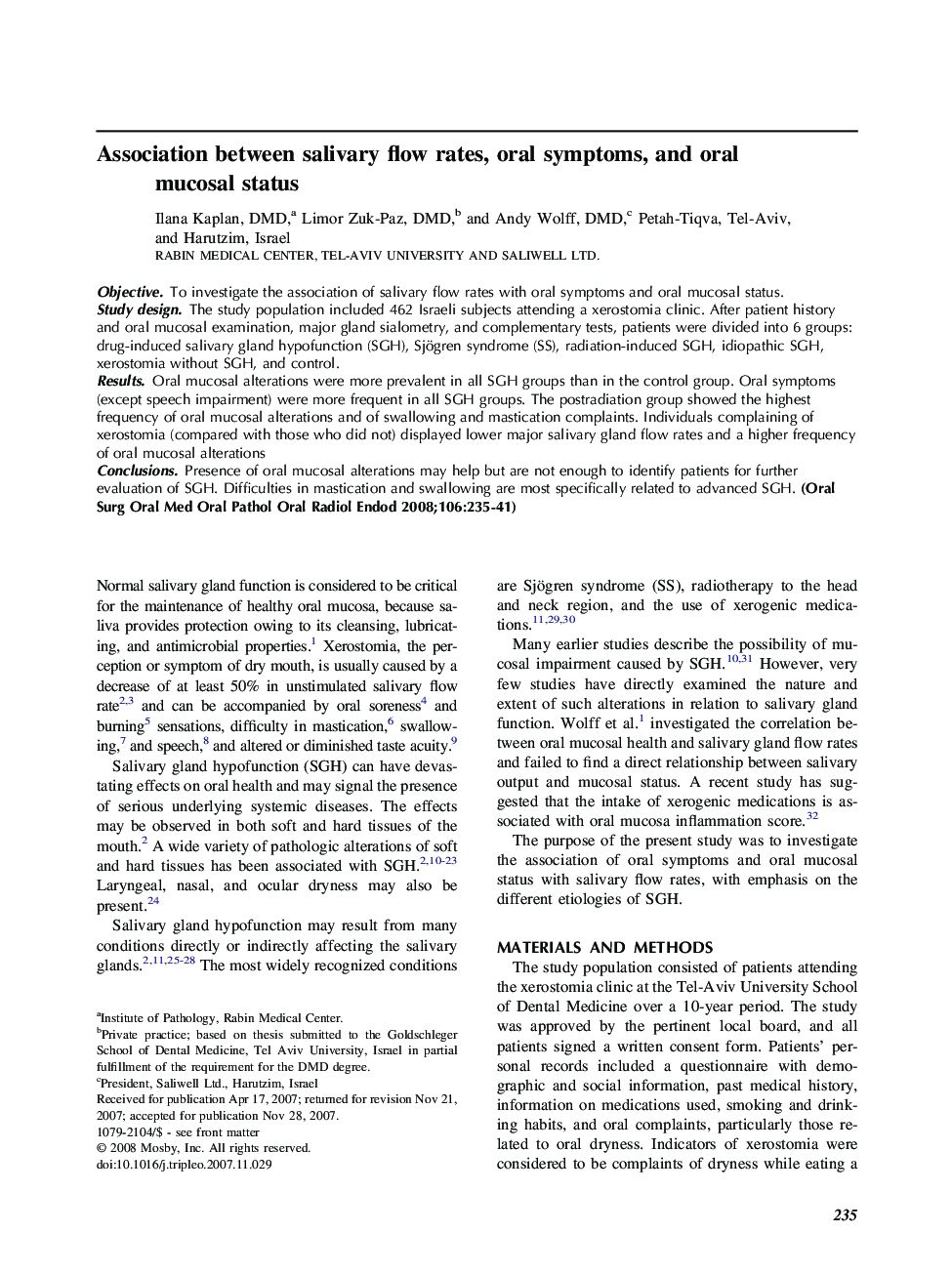| Article ID | Journal | Published Year | Pages | File Type |
|---|---|---|---|---|
| 3168559 | Oral Surgery, Oral Medicine, Oral Pathology, Oral Radiology, and Endodontology | 2008 | 7 Pages |
ObjectiveTo investigate the association of salivary flow rates with oral symptoms and oral mucosal status.Study designThe study population included 462 Israeli subjects attending a xerostomia clinic. After patient history and oral mucosal examination, major gland sialometry, and complementary tests, patients were divided into 6 groups: drug-induced salivary gland hypofunction (SGH), Sjögren syndrome (SS), radiation-induced SGH, idiopathic SGH, xerostomia without SGH, and control.ResultsOral mucosal alterations were more prevalent in all SGH groups than in the control group. Oral symptoms (except speech impairment) were more frequent in all SGH groups. The postradiation group showed the highest frequency of oral mucosal alterations and of swallowing and mastication complaints. Individuals complaining of xerostomia (compared with those who did not) displayed lower major salivary gland flow rates and a higher frequency of oral mucosal alterationsConclusionsPresence of oral mucosal alterations may help but are not enough to identify patients for further evaluation of SGH. Difficulties in mastication and swallowing are most specifically related to advanced SGH.
